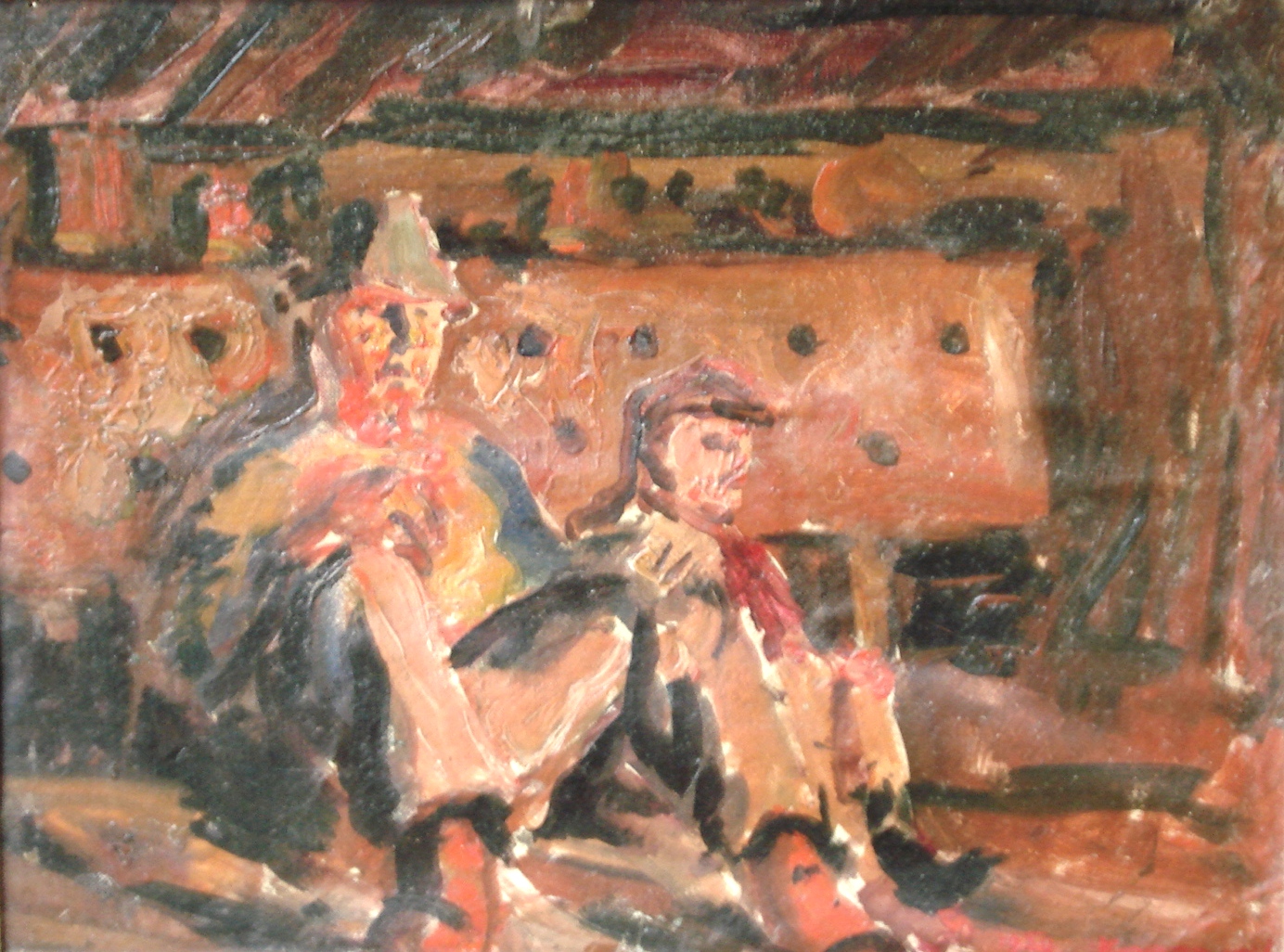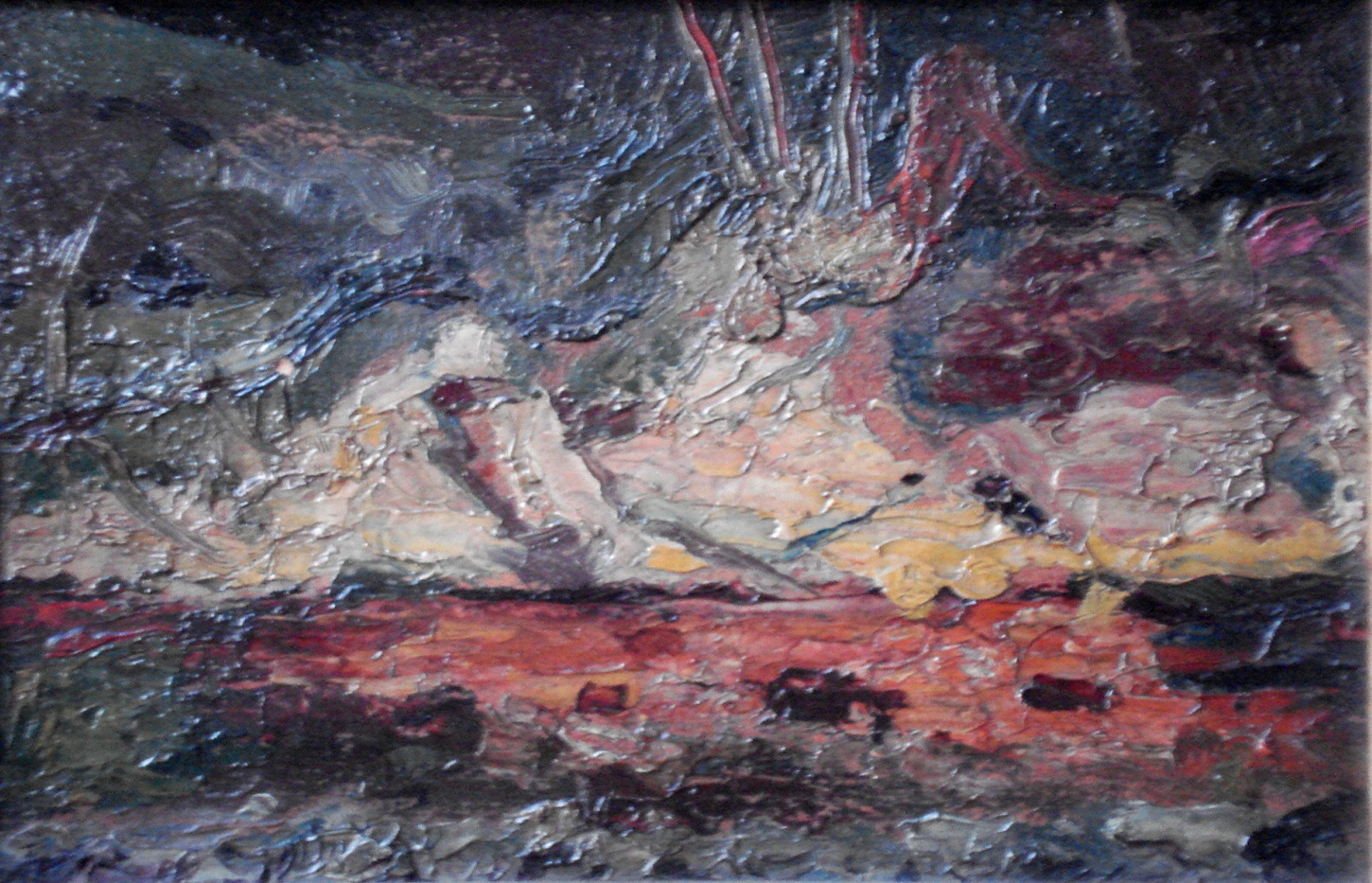Ludwik Konarzewski-junior on:
[Wikipedia]
[Google]
[Amazon]


 Ludwik Konarzewski – junior (April 20, 1918 in Buzuluk – January 23, 1989 in
Ludwik Konarzewski – junior (April 20, 1918 in Buzuluk – January 23, 1989 in
Związani z Ziemią Cieszyńską
2008, Nr 231 (3248) * Sylwetki twórców i popularyzatorów sztuki województwa bielskiego, ed. i oprac. haseł Zofia Bożek Bielsko-Biała, 1987, p. 51-52 , * ''Gniazdo na Buczniku ( „A nest on Bucznik”)'' – a documentary about the Konarzewski family, directed by Aleksandra Dendor, produced by Polish TV in 1993;
The house and studio of the Konarzewski family in Istebna in Cieszyn Silesia
{{DEFAULTSORT:Konarzewski-junior, Ludwik 1989 deaths 1918 births People from Buzuluk, Orenburg Oblast Polish portrait painters 20th-century Polish painters 20th-century Polish male artists Polish sculptors Polish male sculptors 20th-century sculptors Jan Matejko Academy of Fine Arts alumni People from the Province of Upper Silesia People from Katowice People from Cieszyn Silesia Polish male painters Neo-expressionist artists
Cieszyn
Cieszyn ( , ; cs, Těšín ; german: Teschen; la, Tessin; szl, Ćeszyn) is a border town in southern Poland on the east bank of the Olza River, and the administrative seat of Cieszyn County, Silesian Voivodeship. The town has 33,500 inhabitan ...
) was a Polish painter, sculptor and teacher of fine arts who worked in Upper Silesia
Upper Silesia ( pl, Górny Śląsk; szl, Gůrny Ślůnsk, Gōrny Ślōnsk; cs, Horní Slezsko; german: Oberschlesien; Silesian German: ; la, Silesia Superior) is the southeastern part of the historical and geographical region of Silesia, locate ...
and Cieszyn Silesia
Cieszyn Silesia, Těšín Silesia or Teschen Silesia ( pl, Śląsk Cieszyński ; cs, Těšínské Slezsko or ; german: Teschener Schlesien or ) is a historical region in south-eastern Silesia, centered on the towns of Cieszyn and Český T� ...
. A square in Rydułtowy is named after him. Konarzewski owed his primary artistic education to his father, Ludwik Konarzewski – senior. He started his studies (in painting) at the Academy of Fine Arts
The following is a list of notable art schools.
Accredited non-profit art and design colleges
* Adelaide Central School of Art
* Alberta College of Art and Design
* Art Academy of Cincinnati
* Art Center College of Design
* The Art Institute ...
in Kraków in 1938, and finished in 1948, being interrupted by the Second World War. He studied under the direction of (among others) the following colourist painters: Wladyslaw Jarocki, Fryderyk Pautsch, Jerzy Fedkowicz, Zbigniew Pronaszko, Eugeniusz Eibisch and also, temporarily, Wojciech Weiss
Wojciech Weiss (4 May 1875 – 7 December 1950) was a prominent Polish painter and draughtsman of the Young Poland movement.
Weiss was born in Bukovina to a Polish family in exile of Stanisław Weiss and Maria Kopaczyńska. He gave up mus ...
. He studied sculpture under Xawery Dunikowski
Xawery Dunikowski (; 24 December 1875 – 26 January 1964) was a Polish sculptor and artist, notable for surviving Auschwitz concentration camp, and best known for his Neo-Romantic sculptures and Auschwitz-inspired art.
Biography
Dunikowski w ...
and Stanisław Horno-Popławski. He created outdoor monuments such as the sculpture of Karol Miarka in Zabrze
Zabrze (; German: 1915–1945: ''Hindenburg O.S.'', full form: ''Hindenburg in Oberschlesien'', Silesian language, Silesian: ''Zŏbrze'', yi, זאַבזשע, Zabzhe) is an industrial city in Silesia in southern Poland, near Katowice. The west d ...
and Silesian Insurgents in Rydułtowy.Łukasz Konarzewski, ''Malarstwo rzeczywiste Ludwika Konarzewskiego-juniora'' - ''Factual painting of Ludwik Konarzewski-junior'', „Znad Olzy” Rok I nr 3 grudzień, 1998, s. 4 - passim
Konarzewski worked as a teacher in Rydułtowy, near Wodzisław Śląski
Wodzisław Śląski (; german: Loslau, cs, Vladislav, la, Vladislavia, yi, וואידסלוב, Voydislav, szl, Władźisłůw) is a city in Silesian Voivodeship, southern Poland with 47,992 inhabitants (2019). It is the seat of Wodzisław Cou ...
for 30 years. He was a director of the state owned Art Centre that he set up with his father. He had an influence on the artistic and esthetic tastes of the local community – just as his father had done in Istebna in the period between the two wars.
He is the creator of at least 1,000 oil paintings, numerous polychrome
Polychrome is the "practice of decorating architectural elements, sculpture, etc., in a variety of colors." The term is used to refer to certain styles of architecture, pottery or sculpture in multiple colors.
Ancient Egypt
Colossal statu ...
s and artistic elements of church interiors and public buildings in Upper Silesia, and also in the regions around Kraków and Białystok, as well as other places in Poland.
Privately - he and his wife Joanna had three children: daughter Iwona Konarzewska – a portrait painter and two sons: Ludwik (an entrepreneur) and Łukasz.
Paintings
Portraiture, and especially self-portraits and portraits of members of his family constitute the greatest elements of Ludwik Konarzewski Jr’s artistic heritage. Also, his own unique interpretation of landscape is worth noting. Following Dunikowski, with reference to compact mass and a degree of decorativeness, his sculptures are also characterized by erudition in terms of the variety of techniques used (wood, metal, stone, ceramic forms, andmajolica
In different periods of time and in different countries, the term ''majolica'' has been used for two distinct types of pottery.
Firstly, from the mid-15th century onwards, was ''maiolica'', a type of pottery reaching Italy from Spain, Majorca a ...
).Łukasz Konarzewski op. cit.
What is noticeable in his early paintings, from the 1940s and 1950s, is the influence of the colourists, gained from his studies at the Academy of Fine Arts. In the years that follow that influence subsides, and yields to a neo-expressionism
Neo-expressionism is a style of late modernist or early-postmodern painting and sculpture that emerged in the late 1970s. Neo-expressionists were sometimes called ''Transavantgarde'', '' Junge Wilde'' or ''Neue Wilden'' ('The new wild ones'; 'Ne ...
that is manifested especially in landscapes. However, all these works share a realistic expression of reality that is revealed with special force in a very personal attitude to the people portrayed. This constitutes an essential characteristic and value in his works as compared with trends and directions in art in the second half of the 20th century which, on the whole, oscillated beside or beyond visible meaningful content. Nowadays it is his earlier works that seem to be particularly valuable: despite a visible influence of the school, they contain, in a realistic form, his personal and original way of perceiving reality through fine arts.
Collections
The works of Ludwik Konarzewski Jr. are part of the collections of the following institutions: The Museum of the History of Katowice (''Muzeum Historii Katowic''), The Beskid Museum in Wisła (''Muzeum Beskidzkie w Wiśle'') and in the artist’s house and studio in Istebna in Cieszyn Silesia.References
Further reading and looking
* Władysław Barański: “Beskid Śląski: przewodnik”, p. 249, Pruszków 2007 * Golec Józef, Bojda Stefania: Słownik biograficzny Ziemi Cieszyńskiej. T. 2. - Cieszyn,1995, p. 101-102 , * Łukasz Konarzewski: Malarstwo rzeczywiste Ludwika Konarzewskiego-juniora (Factual painting of Ludwik Konarzewski-junior), „Znad Olzy” No 3 December/grudzień 1998, p. 4 * Nasz dziennik.plZwiązani z Ziemią Cieszyńską
2008, Nr 231 (3248) * Sylwetki twórców i popularyzatorów sztuki województwa bielskiego, ed. i oprac. haseł Zofia Bożek Bielsko-Biała, 1987, p. 51-52 , * ''Gniazdo na Buczniku ( „A nest on Bucznik”)'' – a documentary about the Konarzewski family, directed by Aleksandra Dendor, produced by Polish TV in 1993;
External links
The house and studio of the Konarzewski family in Istebna in Cieszyn Silesia
{{DEFAULTSORT:Konarzewski-junior, Ludwik 1989 deaths 1918 births People from Buzuluk, Orenburg Oblast Polish portrait painters 20th-century Polish painters 20th-century Polish male artists Polish sculptors Polish male sculptors 20th-century sculptors Jan Matejko Academy of Fine Arts alumni People from the Province of Upper Silesia People from Katowice People from Cieszyn Silesia Polish male painters Neo-expressionist artists